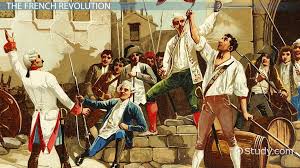“The Age of Progress and Modernity” – Everything You Need to Know
The world as we know it today did not emerge overnight—it is the result of centuries of transformation driven by innovation, reform, and the relentless human pursuit of improvement. Often referred to as “The Age of Progress and Modernity,” this period marks a time when groundbreaking ideas in science, technology, politics, and culture converged to redefine societies across the globe. In this comprehensive guide, we’ll delve into the meaning, origins, and lasting impact of this transformative era. Whether you’re a history buff, a student, or simply curious about the forces that shape our modern world, this article will equip you with the insights needed to understand how progress and modernity have come to define our era.
Introduction: Charting a Path to the Modern World
Imagine a time when steam-powered machines replaced hand tools, when cities sprouted up around new factories, and when radical ideas about democracy, freedom, and innovation began to reshape human civilization. Did you know that many of the conveniences and freedoms we enjoy today—advanced technology, democratic institutions, and global connectivity—have their roots in the Age of Progress and Modernity?
In this post, we will cover:
- A Clear Definition: What exactly do we mean by “The Age of Progress and Modernity”? We’ll break down its essential characteristics.
- Historical Background: We’ll explore the origins and key milestones that set this era in motion, from early industrial innovations to major political reforms.
- In-Depth Exploration: Discover how scientific breakthroughs, technological advancements, economic transformations, and cultural revolutions interplayed to create a new world order.
- Real-World Examples: Through case studies and historical anecdotes, we illustrate how progress and modernity reshaped societies.
- Importance and Benefits: Learn why understanding this era is crucial for informed decision-making in areas like governance, economics, and social policy.
- Addressing Misconceptions: Clear up common myths surrounding this period.
- Modern Relevance: Explore how the legacy of progress and modernity continues to influence contemporary debates and innovations.
By understanding The Age of Progress and Modernity, you’ll gain valuable context for the development of modern institutions and ideas—and discover how the echoes of this transformative era continue to shape our lives today.
What Is “The Age of Progress and Modernity”?
A Straightforward Definition
The Age of Progress and Modernity refers to the broad historical period—primarily spanning the 19th and early 20th centuries—during which societies around the world experienced rapid transformation in science, technology, politics, and culture. This era is characterized by several essential elements:
Innovation and Technological Advancement:
The emergence of new technologies such as the steam engine, electricity, and mechanized production transformed industries, communication, and transportation.Scientific Revolution:
Advances in fields like biology, physics, and chemistry reshaped our understanding of the natural world and spurred further technological progress.Political and Social Reforms:
The period witnessed significant changes in governance, including the expansion of democratic institutions, constitutional reforms, and movements toward social justice.Economic Modernization:
The Industrial Revolution and the rise of capitalist economies led to increased production, global trade, and the development of new economic systems.Cultural and Intellectual Shifts:
Modernity brought new ideas about individual rights, secularism, and progress, influencing art, literature, philosophy, and everyday life.
In essence, The Age of Progress and Modernity is defined by humanity’s journey toward a more innovative, rational, and interconnected world—a journey that continues to impact contemporary society.
Historical and Contextual Background
The Precursor: A World on the Verge of Transformation
Before the dawn of modernity, societies were largely defined by agrarian economies, traditional hierarchies, and relatively static worldviews. However, several key developments set the stage for the dramatic changes to come:
The Enlightenment and Revolutionary Thought
Intellectual Awakening:
In the 17th and 18th centuries, Enlightenment thinkers such as John Locke, Voltaire, and Immanuel Kant championed reason, individual rights, and the scientific method. Their ideas challenged traditional authority and laid the intellectual groundwork for modernity.Political Revolutions:
The American Revolution (1775–1783) and the French Revolution (1789–1799) were pivotal events that broke with the past. These revolutions not only established new political systems based on democratic principles but also ignited a passion for reform that would spread across the globe.
The Industrial Revolution: The Engine of Modernity
Technological Breakthroughs:
The late 18th century witnessed the advent of the Industrial Revolution, marked by inventions such as the steam engine and mechanized textile production. These innovations revolutionized manufacturing, leading to increased productivity and the rise of new economic models.Urbanization:
As factories sprang up, people migrated from rural areas to cities in search of work, giving birth to modern urban centers and altering social structures.Economic Shifts:
The transformation from agrarian economies to industrial powerhouses spurred the development of capitalist markets, finance systems, and global trade networks.
Key Milestones in the Evolution of Progress and Modernity
The Age of Revolutions:
The 19th century was a time of sweeping political reforms. The expansion of suffrage, constitutional developments, and the unification of nations (such as Italy and Germany) were crucial in shaping the modern political landscape.Scientific Advancements:
Figures like Charles Darwin, James Clerk Maxwell, and Marie Curie pushed the boundaries of scientific knowledge, leading to breakthroughs that reshaped our understanding of life and the universe.Cultural Shifts:
Intellectual and artistic movements such as Romanticism, Realism, and later Modernism reflected the rapid changes of the era, challenging traditional values and celebrating human ingenuity.
Notable Anecdotes
The Invention of the Steam Engine:
James Watt’s improvements to the steam engine not only powered factories but also revolutionized transportation, heralding a new era of industrial progress.Urban Transformation in Manchester:
Often called “Cottonopolis,” Manchester exemplified the dramatic urban and social changes wrought by industrialization, becoming a symbol of both progress and the challenges of modernity.
In-Depth Exploration / Main Body
To thoroughly understand The Age of Progress and Modernity, we need to explore its multiple dimensions—technological, scientific, political, economic, cultural, and social. Each aspect contributed to a dynamic and interconnected transformation that continues to resonate today.
1. Technological Innovations and Scientific Advancements
a. The Industrial Revolution: Laying the Foundation for Modernity
Key Inventions:
- Steam Engine:
Revolutionized energy usage and transportation, enabling the mass production of goods. - Mechanized Production:
Innovations like the spinning jenny and power loom transformed textile manufacturing, increasing efficiency and lowering costs. - Railroads and Telegraphs:
Connected distant regions, facilitating the rapid movement of people, goods, and information.
- Steam Engine:
Impact on Society:
The technological revolution reshaped daily life by introducing new forms of labor, spurring urbanization, and creating an interconnected global economy.Real-World Example:
The growth of industrial cities such as Manchester and Birmingham in England provides a vivid illustration of how technology transformed economic and social landscapes.
b. The Scientific Revolution: Unveiling the Mysteries of Nature
- Advancements in Knowledge:
- Evolutionary Theory:
Charles Darwin’s theory of natural selection challenged traditional views of life and provided a framework for understanding biological diversity. - Electromagnetism and Thermodynamics:
Discoveries in these fields laid the groundwork for modern physics and engineering. - Medical Breakthroughs:
Innovations in medicine and public health, such as the development of vaccines and improvements in sanitation, dramatically increased life expectancy.
- Evolutionary Theory:
- Integration of Science and Technology:
The fusion of scientific inquiry with technological innovation created a feedback loop that accelerated progress, fostering an environment of continuous discovery and improvement.
2. Political Reforms and Institutional Evolution
a. The Transformation of Governance
From Absolutism to Democracy:
The decline of absolute monarchies and the rise of constitutional governments marked a significant shift in political power. The ideas of popular sovereignty and individual rights gained prominence.Electoral and Constitutional Reforms:
- Expansion of Suffrage:
Reforms in countries like Britain extended the right to vote, gradually transforming political participation. - Establishment of Representative Institutions:
New systems of governance, including parliaments and democratic assemblies, emerged to better represent the populace.
- Expansion of Suffrage:
Case Study – The British Reform Acts:
The series of reforms in the 19th century, particularly the Reform Acts of 1832, 1867, and 1884, expanded electoral representation and set the stage for modern democratic governance.
b. The Role of Political Ideologies
Liberalism:
Emphasized individual freedoms, constitutional governance, and economic progress. Liberal ideologies drove many of the political reforms of the era.Nationalism:
Fueled movements for national unification and self-determination. Nationalist ideas played a crucial role in reshaping Europe, leading to the creation of unified nation-states.Socialism:
Addressed the inequities of industrial capitalism by advocating for social justice and economic redistribution. Socialist thought provided the intellectual basis for labor reforms and welfare policies.Conservatism:
Acted as a counterbalance to rapid change, emphasizing stability, tradition, and gradual reform.
c. International Relations and Diplomatic Shifts
Diplomatic Tensions:
The reconfiguration of political power in the 19th century led to new alliances and rivalries. The unification of Germany and Italy, for instance, significantly altered the European balance of power.Global Impact:
The political transformations of this era influenced international law, trade, and colonial policies, setting the stage for the complex global order of the 20th century.
3. Economic Modernization and Social Change
a. The Rise of Capitalism
Industrial Capitalism:
The rapid expansion of industrial production and the accumulation of capital spurred the growth of market economies. The emergence of factories and mass production techniques transformed traditional economic systems.Financial Innovations:
The development of modern banking, stock markets, and financial instruments provided the necessary capital for industrial expansion.Economic Integration:
The growth of international trade and the creation of global markets linked nations in unprecedented ways, fostering economic interdependence.Case Study – The Economic Transformation of the United Kingdom:
The United Kingdom’s transition from an agrarian economy to the “workshop of the world” illustrates how industrial capitalism reshaped economic structures and spurred social mobility.
b. Social and Cultural Impacts
Urbanization and Demographic Shifts:
Industrialization led to mass migration from rural areas to cities, creating new urban centers that became hubs of economic and social activity.Formation of New Social Classes:
The rise of the industrial working class and the expansion of the middle class altered traditional social hierarchies, prompting demands for political representation and social justice.Cultural Renaissance:
The transformative energy of the age spurred artistic and literary movements that celebrated progress, human ingenuity, and the changing human experience. Movements like Romanticism and Realism reflected both the triumphs and the challenges of modernity.Real-World Example – The Impact on American Society:
In the United States, industrialization and urbanization transformed social dynamics and contributed to the rise of a unique American cultural identity, characterized by optimism, innovation, and a belief in progress.
4. The Intellectual and Philosophical Landscape
a. The Influence of Enlightenment Thought
Core Ideas:
Enlightenment philosophies emphasized reason, individual rights, and skepticism toward traditional authority. These ideas permeated political discourse and laid the groundwork for modern democratic ideals.Impact on Society:
Enlightenment thought not only inspired political revolutions but also encouraged scientific inquiry and cultural innovation, contributing to the overall momentum of modernity.
b. Debates on Progress and Modernity
Optimism vs. Pessimism:
While many celebrated the rapid progress of the era, others were critical of the social and environmental costs of industrialization. Intellectual debates often centered on whether modernity was a net positive for humanity.Philosophical Critiques:
Thinkers like Friedrich Nietzsche and Karl Marx offered profound critiques of modern society, challenging prevailing ideas about progress and questioning the sustainability of capitalist systems.
c. The Legacy of Intellectual Debates
- Long-Term Influence:
The debates that characterized this period continue to shape modern thought in philosophy, politics, and sociology. They provide a rich intellectual framework for understanding contemporary issues ranging from economic inequality to environmental sustainability.
Importance, Applications, and Benefits
Understanding The Age of Progress and Modernity is crucial for several reasons:
a. Informing Modern Policy and Governance
- Policy Design:
Historical insights into technological, political, and economic transformations help modern policymakers design more effective, inclusive, and adaptive policies. - Institutional Resilience:
Lessons from the past inform strategies for building institutions that can withstand rapid change and global challenges.
b. Enhancing Civic Engagement and Social Awareness
- Political Literacy:
Knowledge of the transformative processes that shaped modern society empowers citizens to engage in informed debates and participate meaningfully in democratic processes. - Cultural Enrichment:
Understanding the intellectual and cultural achievements of this era enriches our appreciation of modern art, literature, and public discourse.
c. Driving Innovation and Economic Growth
- Technological Inspiration:
The breakthroughs of the Age of Progress continue to inspire modern innovations in fields like renewable energy, digital technology, and biotechnology. - Economic Integration:
The economic reforms of this era provide a blueprint for addressing contemporary challenges such as globalization, market volatility, and income inequality.
d. Global Relevance and Future Insights
- Transnational Lessons:
The processes of unification, reform, and modernization are not confined to one region; they offer valuable lessons for nations undergoing transformation today. - Anticipating Future Trends:
By studying historical patterns of progress and modernity, we can better forecast and adapt to future challenges in governance, economics, and society.
Addressing Common Misconceptions and FAQs
Despite its profound influence, several misconceptions about The Age of Progress and Modernity persist. Here are some frequently asked questions along with clarifications:
FAQ 1: Is modernity solely a result of technological advancement?
- Misconception:
Some believe that modernity is only about technology and industrial growth. - Reality:
While technology is a key driver, modernity is also shaped by political reforms, social changes, and cultural shifts. It is a multifaceted process that encompasses scientific, economic, and intellectual evolution.
FAQ 2: Was the Age of Progress entirely positive?
- Misconception:
Many assume that the rapid changes of the era were uniformly beneficial. - Reality:
The Age of Progress brought about tremendous advancements but also significant challenges, including social inequality, environmental degradation, and cultural dislocation. The legacy of this era is complex and requires a balanced understanding.
FAQ 3: Do historical developments of this era have relevance in today’s world?
- Misconception:
Some argue that the changes of the 19th and early 20th centuries are distant history with little impact on modern life. - Reality:
Modern political institutions, economic systems, and cultural norms have deep roots in this transformative period. Understanding its legacy helps us navigate contemporary challenges and shape a better future.
FAQ 4: Is modernity synonymous with progress?
- Misconception:
It is often thought that modernity automatically means positive progress. - Reality:
Modernity is a double-edged sword—while it brings innovation and growth, it also presents new challenges and unintended consequences. Critical reflection on this legacy is essential for sustainable development.
Modern Relevance and Current Trends
a. The Digital Age and Continued Technological Innovation
Evolution of Technology:
The spirit of innovation that characterized the Age of Progress lives on in today’s digital revolution. Advancements in artificial intelligence, renewable energy, and biotechnology are the modern counterparts to the steam engines and telegraphs of the past.Digital Transformation in Governance:
Modern governments are leveraging digital tools for transparency, citizen engagement, and efficient service delivery—continuing the legacy of reform and modernization.
b. Globalization and Shifting Economic Landscapes
Economic Interdependence:
Just as the Industrial Revolution created global trade networks, today’s globalization links economies around the world. Understanding historical economic reforms helps in crafting policies that promote sustainable and equitable growth.Addressing Inequality:
Modern economic policies increasingly draw on lessons from past reforms to address income inequality and ensure that technological progress benefits all segments of society.
c. Political Resurgence of Nationalism and Democratic Debates
Contemporary Political Debates:
The ideas of liberalism, nationalism, socialism, and conservatism—central to the Age of Progress—continue to influence political discourse. Debates over democratic representation, human rights, and state intervention are as relevant now as they were in the past.Balancing Tradition and Innovation:
As societies face new challenges, there is a growing emphasis on balancing traditional values with modern innovations. This dynamic mirrors the historical tension between progress and continuity that defined the era.
d. Cultural and Intellectual Legacy
Revival of Historical Narratives:
Modern cultural movements often draw inspiration from the intellectual debates of the Age of Progress. Whether through literature, art, or public discourse, the ideas of this era continue to influence contemporary thought.Educational Initiatives:
Integrating the study of this transformative period into educational curricula helps foster critical thinking and a deeper understanding of how modern society came to be.
Conclusion: The Enduring Impact of The Age of Progress and Modernity
Summarizing the Key Points
The Age of Progress and Modernity represents a dynamic period of transformation marked by groundbreaking technological, scientific, political, economic, and cultural changes. Key insights include:
Interconnected Change:
Progress and modernity are the results of a complex interplay between innovation, reform, and cultural evolution. The developments of this era set the stage for modern life.Legacy of Transformation:
The advances and challenges of this period continue to influence our institutions, governance, and societal norms. Understanding this legacy is crucial for addressing contemporary issues.Empowerment Through Knowledge:
By studying the historical context of progress and modernity, we equip ourselves with the insights needed to navigate today’s rapidly changing world.
Reinforcing the Importance of Understanding the Age of Progress
Grasping The Age of Progress and Modernity is essential for anyone interested in the origins of our modern world. Its legacy informs everything from technology and politics to culture and economic policy. By learning about this transformative era, we not only appreciate our past achievements but also gain valuable guidance for shaping a better future.
A Call-to-Action
We invite you to:
- Explore Further:
Dive into books, documentaries, and academic research on the Industrial Revolution, political reforms, and cultural transformations that define this era. - Engage in Discussion:
Share your thoughts, questions, and reflections in the comments below or on our social media channels. How do you see the legacy of the Age of Progress influencing your life or community today? - Stay Informed:
Subscribe to our newsletter for more in-depth articles on history, modernity, and the evolution of contemporary society. Your participation helps build a community of informed citizens ready to tackle the challenges of the future.
Additional Resources and Further Reading
For those who wish to further explore The Age of Progress and Modernity, here are some reputable resources:
Books and Academic Journals:
- The Age of Revolution: 1789-1848 by Eric Hobsbawm
- The Age of Capital: 1848-1875 by Eric Hobsbawm
- Modernity: An Introduction to Modern Societies by George Ritzer
- Scholarly articles in journals such as Modern Intellectual History and The Journal of Modern History.
Digital Archives and Museums:
- The Digital Public Library of America (DPLA) for primary documents on industrial and political transformations.
- Europeana Collections, featuring digitized artifacts and historical records related to modernity.
Government and Educational Websites:
- Resources from the U.S. Library of Congress and the British Library.
- Online courses on platforms like Coursera, edX, and Khan Academy covering the Industrial Revolution and modern political history.
Interactive Timelines and Documentaries:
- Multimedia timelines on History.com that illustrate key milestones in technological and political reforms.
- Documentaries available on PBS, Netflix, or YouTube that explore the evolution of modern society.
Final Thoughts
The Age of Progress and Modernity is more than just a historical period—it is the foundation upon which our current world is built. From the sweeping innovations of the Industrial Revolution to the political and cultural transformations that defined the modern era, this period continues to resonate in every aspect of our lives. Understanding its legacy empowers us to appreciate the complexity of modern challenges and to shape policies that foster a more inclusive, innovative, and sustainable future.
Thank you for joining us on this deep dive into The Age of Progress and Modernity. If you found this post insightful, please share it with friends, colleagues, and anyone interested in understanding the forces that have sculpted our modern world. Let’s keep the conversation going and work together to build a future informed by the lessons of our past.







